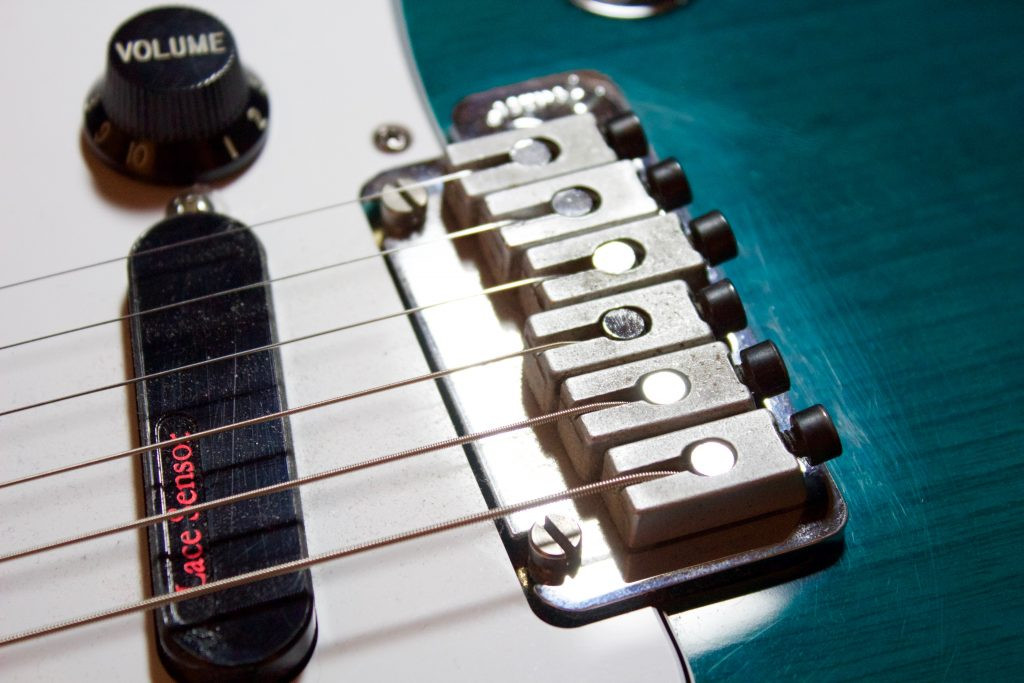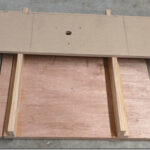Just like any instrument, your guitar needs regular cleaning to maintain its optimal condition, playability, and even its sound. Dirt, grime, and sweat can accumulate over time, not only making your guitar look less appealing but also potentially damaging its components. Learning How To Clean A Guitar properly is a fundamental part of guitar ownership, ensuring your instrument lasts for years and continues to inspire you every time you pick it up.
Why Cleaning Your Guitar is Essential
Beyond aesthetics, keeping your guitar clean offers several crucial benefits:
- Longevity: Just like any piece of equipment, dirt and grime can contribute to wear and tear. Sweat and skin oils, in particular, are corrosive and can damage metal hardware and even the finish of your guitar over time. Regular cleaning helps prevent this damage, extending the lifespan of your instrument.
- Playability: A dirty fretboard can hinder smooth playing. Grime buildup can make it harder to slide between frets and can even deaden the strings. Clean strings also vibrate more freely, leading to better tone and easier playing.
- Sound Quality: While it might seem subtle, dirt and oil buildup on your guitar, especially on the strings and pickups, can dampen the instrument’s resonance and affect its tone. Clean pickups can function optimally, and clean strings vibrate with clarity, resulting in a brighter and more resonant sound.
- Resale Value: If you ever decide to sell or trade your guitar, a well-maintained and clean instrument will always be more appealing and retain a higher resale value compared to a neglected one.
What You’ll Need to Clean Your Guitar
Fortunately, you don’t need a lot of fancy or expensive equipment to clean your guitar effectively. Here’s a basic list of essentials:
- Soft Cleaning Cloths: Microfiber cloths are ideal as they are soft, non-abrasive, and won’t scratch your guitar’s finish. Keep a few on hand – one for general cleaning and another for applying polish.
- Guitar Polish (Optional but Recommended): A good quality guitar polish is designed to safely clean and shine your guitar’s finish. Make sure to choose a polish that is appropriate for your guitar’s finish (e.g., nitrocellulose or polyurethane). Avoid using furniture polish or household cleaners, as these can damage your guitar.
- String Cleaner or Lubricant (Optional): Specifically designed string cleaners can help remove grime and extend the life of your strings. Some also act as lubricants, making playing smoother.
- Lemon Oil or Fretboard Conditioner (For Rosewood or Ebony Fretboards): Rosewood and ebony fretboards can dry out over time, especially in dry climates. Lemon oil or fretboard conditioner helps moisturize the wood, preventing cracking and keeping it in good condition. Important: Do not use lemon oil on maple fretboards as they are typically sealed with a finish.
- Cotton Swabs: Perfect for cleaning hard-to-reach areas around hardware and tight corners.
- Soft Brush (Optional): A soft toothbrush or paintbrush can be helpful for dusting around hardware and pickups.
- String Winder (Optional but Convenient): If you’re planning to clean under the strings or change them, a string winder makes the process much faster.
Step-by-Step Guide to Cleaning Your Guitar
Now, let’s get into the step-by-step process of cleaning your guitar:
1. Cleaning the Guitar Body
The body of your guitar is the most visible part and often accumulates dust, fingerprints, and smudges.
- Dust First: Use a dry, soft cloth to gently wipe down the entire body of your guitar. This removes loose dust and debris before you start cleaning with polish.
- Apply Polish (Optional): If you’re using guitar polish, apply a small amount to a clean area of your microfiber cloth.
- Wipe and Buff: Gently wipe the guitar body in circular motions, applying light pressure. Then, use a clean, dry section of your cloth to buff the surface to a shine, removing any polish residue. Work in small sections and avoid applying too much polish at once.
2. Cleaning the Guitar Neck and Fretboard
The neck and fretboard are crucial for playability and require specific attention.
- Loosen or Remove Strings (Optional but Recommended): Loosening or removing your strings will make it much easier to clean the fretboard thoroughly. If you remove them, this is also a good time to condition the fretboard.
- Clean the Fretboard: If your fretboard is made of rosewood or ebony, and looks dry, apply a small amount of lemon oil or fretboard conditioner to a cloth. Wipe it onto the fretboard, working it into the wood. Let it sit for a few minutes, then wipe off any excess with a clean cloth. For maple fretboards, simply wipe them down with a slightly damp cloth (and immediately dry) or use guitar polish if needed, being careful around the fret edges.
- Clean the Frets: Use a clean cloth to polish the frets themselves. You can use a specialized fret polishing cloth or lightly buff them with a microfiber cloth. For stubborn grime, you can use a very fine steel wool (#0000) very carefully along the length of the fret, being sure to mask off the fretboard wood to avoid scratching. However, for most regular cleaning, a cloth will suffice.
- Clean the Back of the Neck: Wipe down the back of the neck with a clean cloth, and use polish if desired, similar to cleaning the body.
3. Cleaning the Guitar Hardware
Guitar hardware, including the bridge, pickups, tuning pegs, and strap buttons, is prone to corrosion from sweat and oils.
- Gentle Wipe Down: Start by wiping down all metal hardware with a soft, dry cloth to remove surface dust and grime.
- Use Polish Sparingly: For tougher grime or to bring back shine, apply a very small amount of guitar polish to a cotton swab or a corner of your cloth.
- Clean Tight Areas: Use cotton swabs to carefully clean around screws, saddles, and other tight areas of the bridge, pickups, and tuning pegs.
- WD-40 for Corrosion (Use with Caution and Off the Guitar): If you have significant rust or corrosion on hardware, you can carefully use WD-40. Important: Remove the hardware from the guitar before using WD-40 to avoid damaging the finish. Apply WD-40 to a toothbrush or cloth and gently scrub the affected hardware. Wipe away residue thoroughly and clean the hardware with a dry cloth before reattaching it to the guitar. WD-40 should be used sparingly and only for stubborn corrosion.
 Locking tremolo bridge on 1998 Fender American Deluxe Stratocaster
Locking tremolo bridge on 1998 Fender American Deluxe Stratocaster
Image alt text: Close-up of a clean, chrome locking tremolo bridge on a Fender Stratocaster guitar, showcasing its shiny saddles and detailed hardware after cleaning.
4. Cleaning or Changing Guitar Strings
Strings are crucial for sound and playability.
- String Cleaner (Optional): If you’re not changing strings, you can use a string cleaner to wipe down the strings. Run the cleaner cloth along the length of each string to remove grime.
- Replace Strings Regularly: Strings lose their brightness and tone over time, even with cleaning. It’s recommended to replace your guitar strings regularly, depending on how often you play. When you change strings, you get a fresh start and it’s also an excellent opportunity to thoroughly clean the fretboard and hardware.
Cleaning Acoustic vs. Electric Guitars
The fundamental cleaning process is similar for both acoustic and electric guitars. However, there are a few minor differences:
- Acoustic Guitar Finishes: Acoustic guitars are often finished with thinner, more natural finishes like satin or open-pore finishes to enhance resonance. Be extra gentle when cleaning these finishes. Avoid excessive polish and stick primarily to dry cloths or slightly damp cloths for spot cleaning.
- Soundhole: Acoustic guitars have a soundhole that can collect dust and debris inside the body. You can use a can of compressed air to gently blow out dust from the soundhole, or use a specialized guitar soundhole cleaning tool. Be careful not to force anything inside that could damage the internal bracing.
- Electronics (Electric Guitars): Electric guitars have electronic components like pickups and controls. Be careful not to get excessive moisture around these areas. When cleaning pickups, use a dry cloth or cotton swab. Avoid spraying polish directly onto pickups or controls.
Conclusion
Cleaning your guitar is a simple yet vital part of guitar maintenance. By incorporating regular cleaning into your routine, you’ll not only keep your instrument looking its best but also ensure it plays and sounds fantastic for years to come. A clean guitar is a happy guitar, and a happy guitar inspires you to play more! Make it a habit to wipe down your guitar after each playing session and perform a more thorough cleaning periodically. Your instrument will thank you for it.

